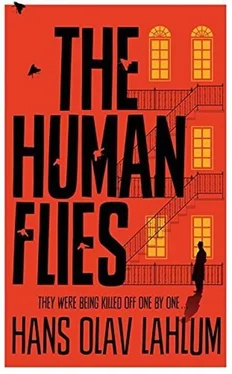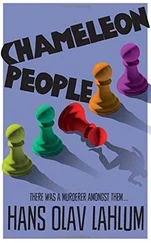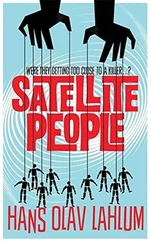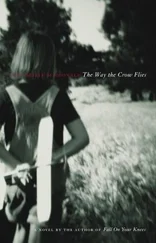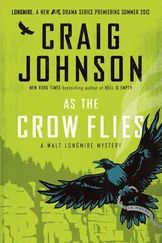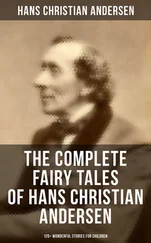I told her not to come again tomorrow and promised that I would ask Darrell Williams to contact her later if he was innocent. She gave me a spontaneous hug and waved to me with gratitude when she got on the next bus a couple of minutes later. My hair was dripping when I walked back to my car and drove home. I had a long drive and a very interesting conversation in store for the ninth day of the investigation. In anticipation of my expedition to Sweden, pictures of all the surviving residents were still on the cards, as well as a joker card for the ever-evasive Deerfoot.
DAY NINE: On the Trail of a Light-Footed War Ghost
My working day started earlier than usual on Good Friday, 12 April 1968. By ten to eight, I was at the office, where, to my relief, nothing of any note had happened. At eight o’clock on the dot, I got into my car, ready to start my solo expedition to Sweden. I went via 25 Krebs’ Street, where everything still seemed to be calm. But it definitely felt like something was brewing when I left Oslo.
My journey progressed at a steady pace. There was not much traffic, and the roads were clear of snow until I was well up into the mountains. Even though the snow was melting, I drove through a beautiful Norwegian winter landscape on my way up to Trysil. The border control with Sweden was symbolic. A customs officer saluted and waved me through without any further formality as soon as he saw the police car. There were no border guards to be seen on either the Norwegian or the Swedish side. It struck me that the control here would have been much stricter and far more frightening for those who fled occupied Norway in fear of their lives during the war. It was a strange feeling to be looking for tracks in the snow that had long since disappeared in pursuit of a mysterious border guide and two refugees who had vanished some twenty-four years earlier.
Once on the Swedish side, I drove for miles without seeing anyone. Then all of a sudden, the police station appeared, round a bend. It was just after one o’clock. The turnoff was marked with a police sign, and there were two unmistakable Swedish police cars parked outside. The station itself was more like a simple two-storey family house, and lay at the foot of one side of a long valley.
Chief of Police Hans Andersson had coffee and cakes waiting for me in his office. He was more or less as I had imagined: a slightly greying man in his sixties, about half a head shorter than me, but a bit heavier all the same. His back was still straight, his eyes still bright, his handshake firm and his smile friendly. But his voice was gentler than expected, and his first sentence even more unexpected.
‘Welcome. Always nice to get a visit from a fellow countryman!’
He chuckled at my surprise and explained.
‘Once upon a time, it was Hans Andersen from Norway – I started my training there. But then I met a beautiful young girl from these parts one Easter holiday and life turned out the way it did… I trained as a policeman in Gothenburg and have served here ever since.’
He quickly leaned over towards me and lowered his voice when he continued.
‘It has not always been easy. The dissolution of the union was only a couple of decades old and the older generation still harboured a good deal of prejudice against the Norwegians. My father-in-law said very early on that he could accept a Norwegian as his son-in-law, but he could not accept his grandchildren having a Norwegian surname. So Hans Andersen became Hans Andersson.’
He paused and chewed pensively on a bun.
‘Things got better for a while, but then the war broke out and it all got more complicated again. In the first two years of the war, there was considerable sympathy for the Germans, and a firm belief that they would win the war. You know, perhaps, that the Norwegian foreign minister Koht came to Sälen in 1940 only to be told that he was not welcome here and that the king could risk being imprisoned if he came to Sweden.’
I nodded and signalled that he should continue. I realized that this was going to be a long and interesting conversation.
‘Fortunately, the mood soon changed in 1942 to 1943. News of the executions and arrests in Norway drew more attention and it became increasingly obvious that the Germans were on the defensive. The orders from Stockholm came through that refugees coming from Norway should be welcomed and well looked after. We adopted a very pragmatic approach to the situation. The refugees were first registered properly here in the office on the ground floor. Then they were taken up to the living room in my flat upstairs to celebrate with coffee and food. More than once we put them up overnight in one of the guest rooms. There were many great moments, as I am sure you can imagine. I saw some of the happiest people I have ever seen in my life outside this building during the war.’
‘Do you remember when it was that you met Harald Olesen for the first time?’
He nodded and smiled happily.
‘I remember the date very well, because it was the day before Christmas Eve 1942. They had walked through the night and came down the side of the valley shortly after breakfast. We had just started decorating the Christmas tree when they came. I found out what his real name was much later. During the war, he was called Hawkeye here on the Swedish side. The name is from a Red Indian book and is very fitting. Harald Olesen’s profile resembled a hawk, and he had better eyesight than most. He was nearly fifty by then, but looked much younger. I have thought about it later – the code names were perhaps rather risky, even though we seldom used them. The name Hawkeye was well suited to Harald Olesen, and Deerfoot fitted his partner remarkably well. I once mentioned it to Harald Olesen, but he just laughed and said that no one would suspect Deerfoot of anything, and that in fact the name Catpaw would have been even better. Which was true. Deerfoot was in many ways a remarkable young man. He was incredibly light on his feet. In both summer and winter, Deerfoot seemed to float, and we often joked that he did not leave any tracks, not even in newly fallen snow. Never before or since have I seen a person dance so lightly over the snow as Deerfoot. It was always as if he was tightly sprung, ready to pounce. Like a featherweight boxer, if you see what I mean.’
I had seen some boxing matches and knew exactly what he meant. I had also understood quite quickly that Hans Andersson was not a fast storyteller and had a penchant for melodrama.
‘Very interesting. And was Deerfoot there the first time that you met Harald Olesen?’
He nodded eagerly.
‘Yes, both then and every time after. It was an interesting story. Harald Olesen always struck me as being a very intelligent and capable man. I was not at all surprised when he became a government minister after the war. But as a member of the Resistance, he had one real weakness, which he controlled because he was well aware of it. He told me on the third or fourth time that he was here, and I certainly had never noticed it. Harald Olesen had almost no sense of direction. If he had gone out into the mountains alone with the refugees, they may never have found their way anywhere. He would often call Deerfoot his map and compass. As I understood it, Deerfoot knew the mountains well from before the war, and also had a keen sense of direction.’
He paused and politely waited for me to finish writing my notes. I waved him on impatiently.
‘There were many refugees who benefited from Deerfoot’s infallible sense of direction, and who were openly grateful. We raised the flag here every day as a discreet signal to any refugees who might cross the border. There was great excitement here many a time when the people making their way down the side of the valley saw the flag and realized that they had finally arrived safely in Sweden. I remember the first time especially well, because one of the refugees they had with them was so young. He was only sixteen at the time, in 1942. He told me himself when he came back ten years later with his wife and child to thank us and give us presents.’
Читать дальше
